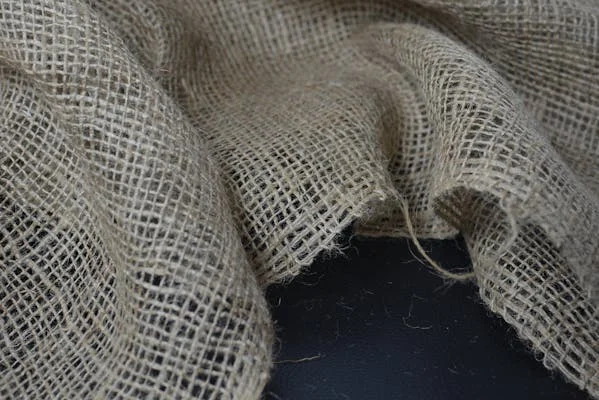When it comes to high-performance materials, few options stand out as prominently as 121 Fiberglass Cloth Textron. This versatile fabric has carved a niche across industries like aerospace, marine, automotive, and industrial manufacturing due to its exceptional properties. Whether you’re a professional seeking reliable materials or a curious enthusiast, understanding what makes this fiberglass cloth unique can open doors to innovative applications. In this article, we’ll explore its composition, benefits, uses, and why it’s a top choice for demanding projects. Let’s dive in and discover why 121 Fiberglass Cloth Textron deserves your attention.
What is 121 Fiberglass Cloth Textron?
Defining the Material
At its core, 121 Fiberglass Cloth Textron is a woven fabric made from fine glass fibers. These fibers are meticulously crafted into a lightweight yet durable cloth, offering a balance of strength and flexibility. Produced by Textron, a renowned name in advanced materials, this specific variant designated as “121” is engineered to meet rigorous standards. Its weave pattern and fiber density contribute to its reputation as a high-performance solution for specialized needs.
How It’s Made
The creation of 121 Fiberglass Cloth Textron begins with molten glass extruded into ultra-thin strands. These strands are then woven into a tight, uniform cloth using advanced textile techniques. The result is a material that combines the inherent toughness of glass with the adaptability of a fabric. This process ensures consistency, making it a reliable choice for applications where precision matters.
Key Properties of 121 Fiberglass Cloth Textron
Exceptional Strength and Durability
One of the standout features of 121 Fiberglass Cloth Textron is its impressive tensile strength. Despite its lightweight nature, it can withstand significant mechanical stress, making it ideal for structural components. This durability ensures that products made with this cloth maintain integrity even under harsh conditions.
Resistance to Heat and Corrosion
Another critical advantage is its resistance to extreme temperatures and corrosive environments. The glass fibers are inherently non-reactive, meaning they won’t degrade when exposed to chemicals, moisture, or salty air. This property makes it a go-to material for marine and industrial settings where corrosion is a constant threat.
Lightweight and Flexibl
Unlike heavier alternatives like metal, this fiberglass cloth is remarkably light. Its flexibility allows it to conform to complex shapes, which is a boon for manufacturers creating intricate designs. This combination of low weight and adaptability sets it apart in industries prioritizing efficiency and performance.
Applications of 121 Fiberglass Cloth Textron
Aerospace Industry
In aerospace, where every ounce counts, 121 Fiberglass Cloth Textron shines as a lightweight reinforcement material. It’s commonly used in composite structures like aircraft panels and interiors. Its ability to endure high temperatures and maintain structural integrity under stress aligns perfectly with the demands of flight.
Reinforcing Composites
The cloth is often layered with resins to form strong, lightweight composites. These composites reduce aircraft weight without compromising safety, contributing to fuel efficiency and performance—an essential consideration in modern aviation.
Marine Applications
The marine industry benefits immensely from this material’s corrosion resistance. Boat builders use it in hulls, decks, and other components exposed to water and salt. Its low moisture absorption ensures longevity, even in the harshest aquatic environments.
Durable Boat Construction
By integrating 121 Fiberglass Cloth Textron into fiberglass-reinforced plastics (FRP), manufacturers create vessels that resist cracking and wear. This durability translates to lower maintenance costs and longer service life for boats and yachts.
Automotive Uses
In the automotive sector, this cloth enhances parts like body panels, hoods, and interior supports. Its lightweight nature helps improve fuel economy, while its strength ensures safety and reliability on the road.
Enhancing Performance Parts
High-performance vehicles often rely on this material for custom components. Its ability to be molded into precise shapes allows engineers to design aerodynamic parts that boost speed and efficiency.
Industrial and Electrical Applications
Beyond transportation, the cloth serves as an insulator in electrical systems and a protective layer in industrial equipment. Its heat resistance makes it perfect for heat shields, gaskets, and other tools exposed to extreme conditions.
Insulation and Protection
In factories, it’s used to shield machinery from heat and chemicals, extending equipment life. In electrical setups, it provides a non-conductive barrier, enhancing safety and performance.
Benefits of Using 121 Fiberglass Cloth Textron
Cost-Effectiveness
While the initial investment might seem higher than some alternatives, the long-term savings are significant. Its durability reduces the need for frequent replacements, and its lightweight design cuts transportation and installation costs.
Versatility Across Industries
Few materials can claim the broad applicability of this fiberglass cloth. From planes to boats to factories, its ability to meet diverse needs makes it a versatile asset for manufacturers and engineers alike.
Environmental Resistance
Its resistance to environmental factors like UV rays, moisture, and chemicals ensures consistent performance over time. This reliability minimizes waste, aligning with sustainable manufacturing goals.
How to Work with 121 Fiberglass Cloth Textron
Preparation and Handling
Working with this material requires some preparation. Ensure your workspace is clean and ventilated, as cutting or layering it with resin can release fine particles. Wear protective gear like gloves and masks to stay safe.
Cutting and Shaping
Use sharp tools to cut the cloth to size, as its tight weave resists fraying. It can be shaped over molds or layered into composites, depending on your project’s needs.
Combining with Resins
For most applications, the cloth is paired with epoxy or polyester resins. Apply the resin evenly, ensuring full saturation, then let it cure. This process creates a solid, reinforced structure that leverages the cloth’s strengths.
Curing Tips
Curing times vary based on the resin and conditions—follow manufacturer guidelines for best results. A smooth finish enhances both aesthetics and performance.
Comparing 121 Fiberglass Cloth Textron to Alternatives
Fiberglass vs. Carbon Fiber
While carbon fiber offers superior strength, it’s far more expensive. The 121 variant provides a cost-effective middle ground, delivering ample strength for most applications without breaking the bank.
Fiberglass vs. Metal
Compared to metals like steel or aluminum, this cloth is lighter and corrosion-resistant but less suited to extreme load-bearing roles. It’s a trade-off between weight savings and raw power.
Why Choose 121 Fiberglass Cloth Textron?
Industry Trust in Textron
Textron’s reputation for quality underpins this product’s appeal. Known for innovation, the company ensures each batch meets stringent standards, giving users confidence in its performance.
Tailored for High-Performance Needs
The “121” designation isn’t random it reflects a specific weave and thickness optimized for demanding tasks. This precision makes it a favorite among professionals who can’t afford to compromise.
Future Trends and Innovations
Advancements in Fiberglass Technology
Research continues to refine fiberglass properties, with efforts focused on boosting thermal tolerance and strength. These improvements could expand the cloth’s reach into even more industries.
Sustainability in Focus
As industries prioritize eco-friendly materials, this cloth’s durability and recyclability position it well. Future iterations might incorporate greener production methods, enhancing its environmental footprint.
Practical Tips for Buyers
Sourcing Quality Material
Purchase from reputable suppliers to ensure authenticity. Look for certifications or batch numbers verifying it’s genuine Textron product.
Evaluating Project Fit
Consider your project’s specific needs weight, strength, environment and match them to the cloth’s properties. Consulting with experts can help you decide if it’s the right choice.
Conclusion: The Lasting Impact of 121 Fiberglass Cloth Textron
In a world of evolving materials, 121 Fiberglass Cloth Textron stands out for its blend of strength, versatility, and resilience. From aerospace to marine to industrial uses, it delivers reliable performance where it matters most. Its lightweight design, coupled with resistance to heat and corrosion, makes it a smart investment for professionals aiming to innovate without overspending. As technology advances, this material is poised to remain a cornerstone of high-performance applications. Whether you’re building a boat, a car, or an insulator, this fiberglass cloth offers the durability and adaptability you need to succeed. Ready to explore its potential? The possibilities are as vast as the industries it serves





